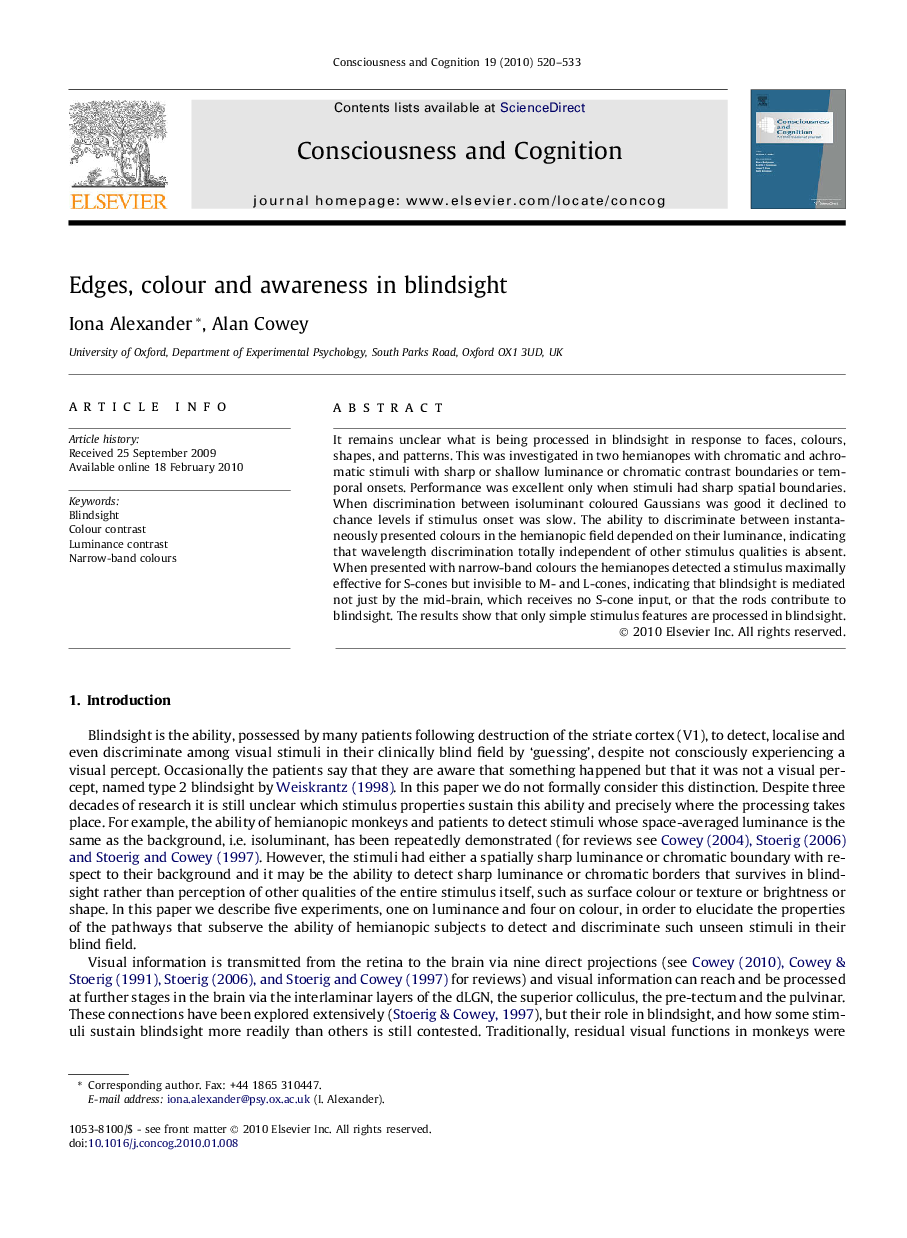| کد مقاله | کد نشریه | سال انتشار | مقاله انگلیسی | نسخه تمام متن |
|---|---|---|---|---|
| 927829 | 922278 | 2010 | 14 صفحه PDF | دانلود رایگان |

It remains unclear what is being processed in blindsight in response to faces, colours, shapes, and patterns. This was investigated in two hemianopes with chromatic and achromatic stimuli with sharp or shallow luminance or chromatic contrast boundaries or temporal onsets. Performance was excellent only when stimuli had sharp spatial boundaries. When discrimination between isoluminant coloured Gaussians was good it declined to chance levels if stimulus onset was slow. The ability to discriminate between instantaneously presented colours in the hemianopic field depended on their luminance, indicating that wavelength discrimination totally independent of other stimulus qualities is absent. When presented with narrow-band colours the hemianopes detected a stimulus maximally effective for S-cones but invisible to M- and L-cones, indicating that blindsight is mediated not just by the mid-brain, which receives no S-cone input, or that the rods contribute to blindsight. The results show that only simple stimulus features are processed in blindsight.
Journal: Consciousness and Cognition - Volume 19, Issue 2, June 2010, Pages 520–533